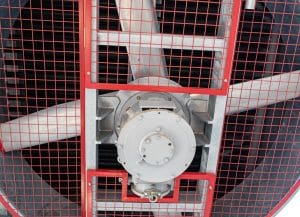 In many different industries, one of the keys to technological advancement has been the streamlining of thermal management techniques and companies’ electrical cooling capabilities. As technology has grown more powerful, the need to efficiently manage the waste heat that it produces has also become important. Meeting that need within the increasingly tighter confines of newer technologies, while minimizing the overall costs of keeping the application properly cooled, can be more than challenging for older cooling solutions. The difference in electrical cooling with modern heat exchangers, which don’t rely on the same cumbersome thermal management processes, has proven an important catalyst for technology to continue advancing further.
In many different industries, one of the keys to technological advancement has been the streamlining of thermal management techniques and companies’ electrical cooling capabilities. As technology has grown more powerful, the need to efficiently manage the waste heat that it produces has also become important. Meeting that need within the increasingly tighter confines of newer technologies, while minimizing the overall costs of keeping the application properly cooled, can be more than challenging for older cooling solutions. The difference in electrical cooling with modern heat exchangers, which don’t rely on the same cumbersome thermal management processes, has proven an important catalyst for technology to continue advancing further.
Meeting modern thermal management goals
The goal of an electrical thermal management system is to stop waste heat from accumulating within electrical enclosures, thereby preventing the application from overheating. For older applications, solutions like air conditioners and air compressors can provide a sufficient amount of cold air to continuously cool the inside of the enclosure. However, HVAC and air compression can be costly solutions to maintain, especially for newer technologies that generate larger amounts of waste heat within smaller and sleeker enclosures. To address the need for more efficient thermal management, companies have benefited significantly from the use of more streamlined methods of transferring waste heat.
Keeping operating costs much lower
When electrical cooling solutions are designed to transfer electrical waste heat, they’re able to continuously keep applications cool in a much more efficient manner. The process of transferring heat involves using the natural properties of an eco-friendly cooling fluid and the waste heat itself. Within a heat exchanger, the fluid absorbs waste heat as electrical components emit it, preventing any rise in temperature within the enclosure. At the point that the fluid absorbs enough heat to evaporate, known as its latent heat of vaporization, the fluid becomes much less dense and flows easily away from the electrical components. When the fluid reaches the custom heat sink, it dissipates the heat and condenses back to liquid. The entire process requires only a fraction of the energy required for more traditional cooling solutions, helping companies significantly lower their overall energy costs.
Making thermal management more advanced
The basis of how heat exchangers improve thermal management processes for most companies is the natural and streamlined way in which they transfer electrical waste heat. Not only does this help keep electrical cooling costs down and boost an application’s efficiency, it has also opened up ways for companies to utilize heat transfer techniques to enhance other thermal management applications. From making processes such as food and beverage pasteurization or pharmaceutical packaging more efficient to helping companies reduce the costs of endeavors such as wastewater treatment, the different heat transfer techniques that heat exchangers use have been a substantial advantage to thermal management in general.
For more information about the difference in electrical cooling with heat exchangers, call Noren Thermal Solutions in Taylor, TX, at 866-936-6736.







